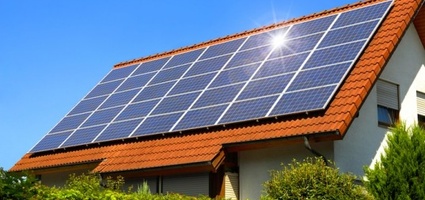 It’s Friday! Time for an abbreviated, and mostly optimistic, Nuclear Newsreel…
It’s Friday! Time for an abbreviated, and mostly optimistic, Nuclear Newsreel…
Department of Energy workers yesterday made it far enough into the WIPP site to reach the contaminated area, according to the Associated Press. However, the workers were unable to remain deep in the site long enough to determine what caused the February and March radiation releases. The contaminated area is believed to be “panel 7.” As AP describes it, “Waste at the plant is stored in panels, which are a series of rooms cut out of underground salt beds. Five of those panels are full and have already been sealed. Panel 6 is full but has not yet been sealed. Panel 7 is the current active storage area. Crews made it to both Panels 6 and 7, and they found the contamination in Panel 7.”
Clean Energy
Nobel Prize-winning economist Paul Krugman admits he thought the idea that the wind and sun could be major energy players was “hippie-dippy wishful thinking.” No more. With solar prices plunging and renewables gaining worldwide, Krugman now says de-carbonizing the planet is a realistic goal–and, it can be done without harm to the U.S. or world’s economies. Okay, probably most GreenWorld readers already knew that; but when the concept begins reaching the mainstream (though Krugman, despite his excellent work over the years, unfortunately remains somewhat left of the mainstream), that’s when you know the concept is not only valid, it will quickly become accepted wisdom. Krugman’s entire piece here is quite optimistic on the world’s ability to avoid the worst of climate change.
Ukraine seems to be moving in the right direction in one key area: it is already trying to boost its renewable energy sector to reduce reliance on Russian fossil fuels. The problem, for the nation left near bankruptcy by former President Viktor Yanukovich, is obtaining investment capital to get projects off the ground. So yesterday, the Ukrainian embassy in the U.S. hosted an event designed to attract new investment for renewable energy projects in the country. Ukraine has considerable renewable energy potential (and even more potential for improving energy efficiency) so this is a great first step.
A team from the French firm Schneider Electric found, much to its own surprise, that increasing Australia’s existing renewable energy target would actually lead to lower electricity prices. The study was commissioned by large energy users in the country, which typically have opposed renewable energy standards. There’s really not much reason to think the same lesson wouldn’t be found everywhere.
Scott Sklar of the Stella Group has been a leader in solar power and solar policy for decades. And, in this piece, titled Utility Nightmares: Distributed Generation and Halving Electricity Consumption, he does talk briefly about the challenges to utilities of the advent of large-scale rooftop solar. But his real point here is that just four cost-effective energy efficiency measures can cut building electricity use by 50%. And, of course, when such measures are put into large-scale practice that means utilities will be selling less electricity. That’s good news for the planet, of course. But it’s bad news for the traditional utilities: as rooftop solar becomes more commonplace and as energy efficiency programs and technology kick in at greater levels than they are now (and that is surely as inevitable as rooftop solar), the utilities will find themselves in a serious bind. Too many will have overbuilt with expensive large nuclear and fossil fuel plants that just won’t be needed; with nuclear utilities already attempting to rig the electricity markets in favor of nuclear power to salvage a handful of their least-economic aging reactors, just imagine what the industry will try to come up with in 10-15 years from now when their entire business model is no longer relevant. (Full disclosure: Scott served as an expert witness for NIRS in our litigation against the proposed Calvert Cliffs-3 nuclear reactor, on the issue of whether the NRC had understated the ability of clean energy sources to serve as an alternative to that reactor. And he did a great job!).
Utilities going to the politicians for help with the scenario above may find doors closing on them. Public opinion polls consistently find that Americans support renewable energy and energy efficiency. The most recent poll is from Ohio, where “72 percent responded that they favored renewable energy sources over more traditional forms of energy,” and 86 percent support utility energy efficiency rules. Ohio is one of the states where right-wing organizations like the American Legislative Exchange Council (ALEC) and utilities are teaming up to try to roll back popular renewable energy standards and other clean energy programs. Politicians supporting groups like that clearly do so at their own risk….
Have a great weekend….
Michael Mariotte
April 18, 2014
Permalink: https://www.nirs.org/2014/04/17/nuclear-newsreel-friday-april-18-2014/
You can now support GreenWorld with your tax-deductible contribution on our new donation page here. We gratefully appreciate every donation of any size–your support is what makes our work possible.
Comments are welcome on all GreenWorld posts! Say your piece above. Start a discussion. Don’t be shy; this blog is for you.
If you like GreenWorld, you can help us reach more people. Just use the icons below to “like” our posts and to share them on the various social networking sites you use. And if you don’t like GreenWorld, please let us know that too. Send an e-mail with your comments/complaints/compliments to nirs@nirs.org. Thank you!
Note: If you’d like to receive GreenWorld via e-mail daily, send your name and e-mail address to nirs@nirs.org and we’ll send you an invitation. Note that the invitation will come from a GreenWorld@wordpress.com address and not a nirs.org address, so watch for it.



